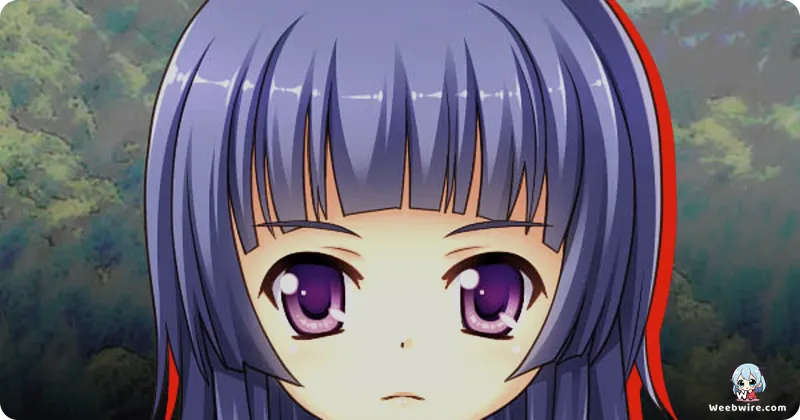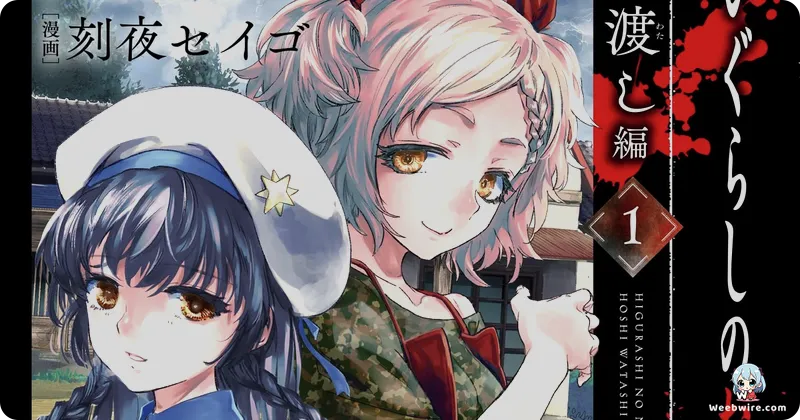Genre-Defying OVA: 'When They Cry Rei' Delivers Unexpected Tones and Profound Insights

Stepping beyond the chilling confines of its main narrative, the 2009 OVA series When They Cry Rei offers an extraordinary and often bewildering journey into the multifaceted world of Higurashi no Naku Koro ni. Produced by Studio DEEN, Rei is not a direct continuation of the primary storyline, but rather a compelling anthology of three distinct stories. Each narrative showcases a drastically different facet of the Higurashi experience, highlighting Ryukishi07’s expansive creative range far beyond its signature psychological horror.
The most striking feature of When They Cry Rei is its bold and unpredictable tonal variety. Unlike the consistently dark and suspenseful main series, Rei ventures into realms of profound psychological introspection, boisterous slapstick comedy, and even delightful fan service. This unique structure comprises three arcs: Saikoroshi-hen (Dice-Killing Arc), Hirukowashi-hen (Daybreak Arc), and Hajisarashi-hen (Embarrassment-Exposing Arc). Each is a self-contained narrative that provides fresh and surprising insights into the beloved characters of Hinamizawa.

The Profound Depths of Saikoroshi-hen
Saikoroshi-hen emerges as the collection's most significant and thematically rich offering. Following the harrowing conclusion of the main series, Rika Furude finds herself in an alternate, eerily peaceful reality after a near-fatal accident. Here, Hinamizawa is free from its curse, her friends are alive and well, and the decades of looping tragedy she endured never happened. However, this serene existence comes at a profound cost: the deep bonds and personal growth forged through her countless struggles are conspicuously absent. Her friends, subtly different, lack the profound connections she cherished in her original timeline.
This arc plunges into deep psychological and philosophical territory, posing a critical question: Is a life of blissful ignorance, devoid of the pain that shaped one's identity, truly preferable? It is a masterful, cerebral exploration of self, memory, and the value of suffering, delivering an existential dread uniquely Higurashi, without relying on typical gore or overt violence. It challenges viewers to consider the true meaning of happiness and personal growth.
The Hilarious Antics of Hirukowashi-hen
In sharp contrast, Hirukowashi-hen shifts gears entirely into pure, unadulterated comedy. Adapted from a bonus story in the PlayStation 2 game Higurashi no Naku Koro ni Matsuri, this arc features the Hinamizawa gang on a hilarious treasure hunt for a legendary 'magatama,' an artifact that swaps personalities upon touch. The result is an uproarious romp filled with exaggerated expressions, absurd situations, and a complete abandonment of the series' usual tension.
Characters like Keiichi, Rena, Mion, Shion, Satoko, and Rika are thrown into a whirlwind of comedic misunderstandings, often swapping personalities and leading to incredibly funny scenarios. This arc provides a much-needed comedic interlude, a lighthearted parody that allows fans to see their favorite cast in a completely stress-free, laugh-out-loud environment. It brilliantly demonstrates Ryukishi07's remarkable ability to craft engaging narratives across diverse genres, proving that even a dark series can embrace humor effectively.
The Lighthearted Charm of Hajisarashi-hen
The final arc, Hajisarashi-hen, often considered the most divisive, offers a glimpse into the franchise's lighter side. As an adaptation of the spin-off fighting game Higurashi Daybreak, this episode features the characters enjoying a day at the pool in swimsuits, complete with water volleyball and lighthearted interactions. While it offers no significant plot development or thematic depth, its inclusion serves as a delightful bonus for fans who appreciate the characters in a relaxed setting.
Its presence highlights When They Cry Rei as a collection of supplementary stories, some designed purely for entertainment and fan appreciation, rather than advancing the main narrative. This arc, while debated among fans, firmly positions Rei as a unique experimental playground for the franchise, showcasing its versatility beyond its core horror elements.
Production and Significance
Studio DEEN, consistent with its work on the main Higurashi anime, maintained a familiar visual style throughout When They Cry Rei, grounding the disparate narrative tones within a recognizable aesthetic. The OVA format facilitated creative freedom, allowing for the exploration of these diverse concepts without the constraints of a television schedule or strict canonical progression. The title 'Rei' itself is significant, potentially meaning 'zero' (a reset or side story) or 'spirit/soul' (hinting at Rika's spiritual journey and the spiritual core of the series).
Ultimately, When They Cry Rei stands as a fascinating, essential footnote in the Higurashi saga, offering an unexpected blend of psychological drama, vibrant comedy, and warm fan service. It is a collection that defies easy categorization, challenging audience expectations and proving the remarkable versatility and enduring appeal of the Hinamizawa residents. For any fan eager to explore the full, multifaceted spectrum of the When They Cry universe, this OVA series is a must-watch.
Credits
When They Cry Rei
Author
Ryukishi07 (07th Expansion)
Cover Art
Kyuta Sakai
Studio
Studio DEEN
Publisher
07th Expansion
Producers





